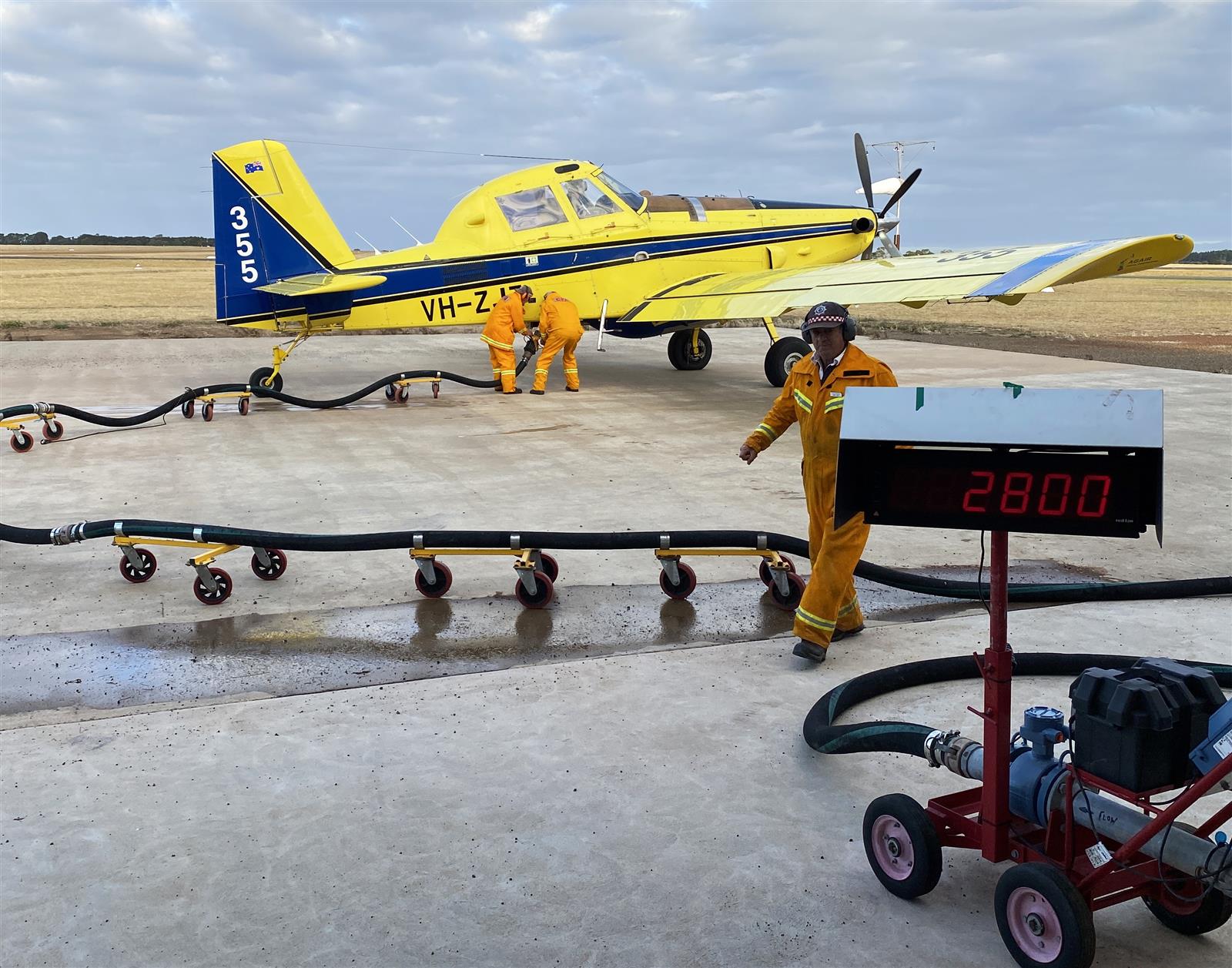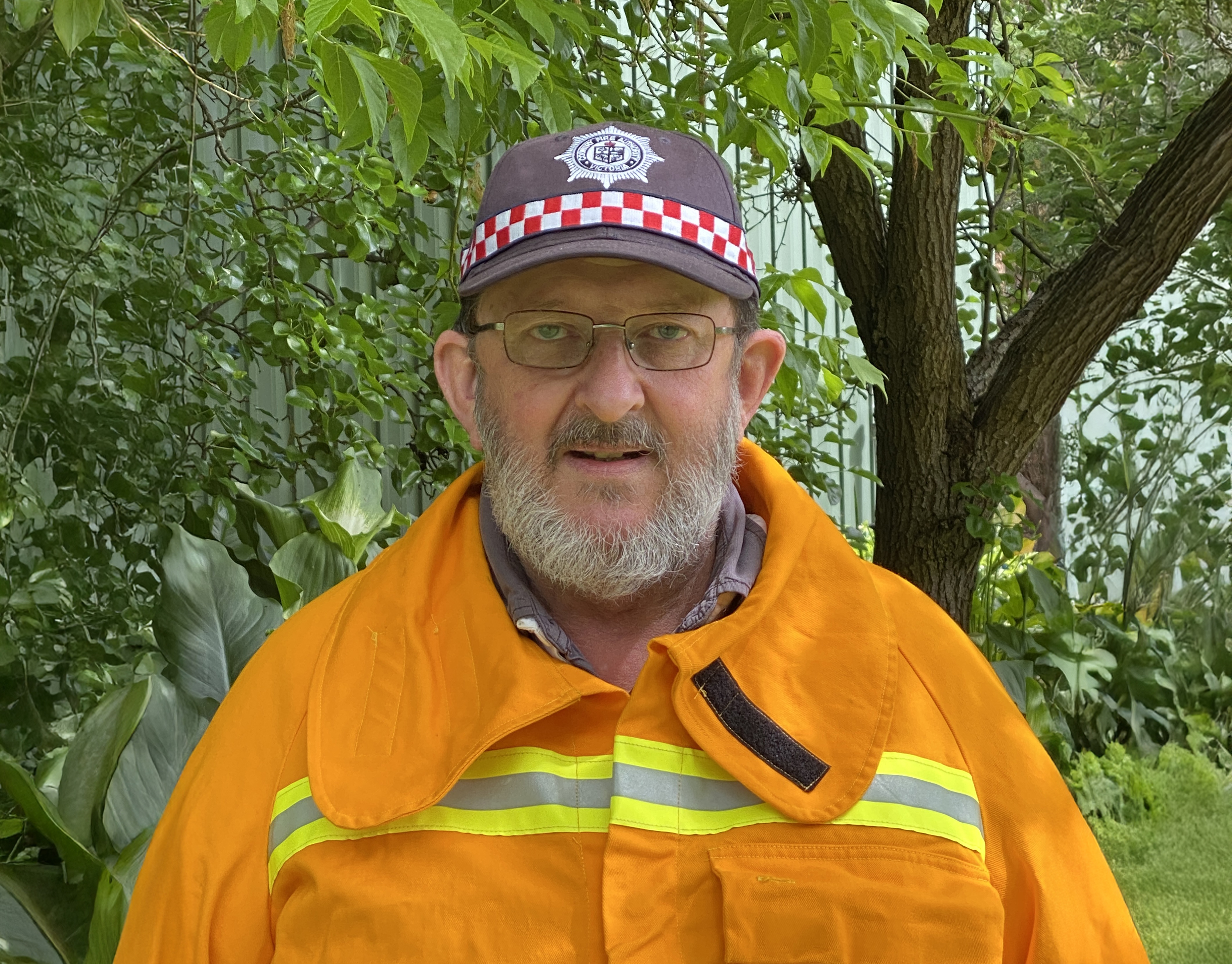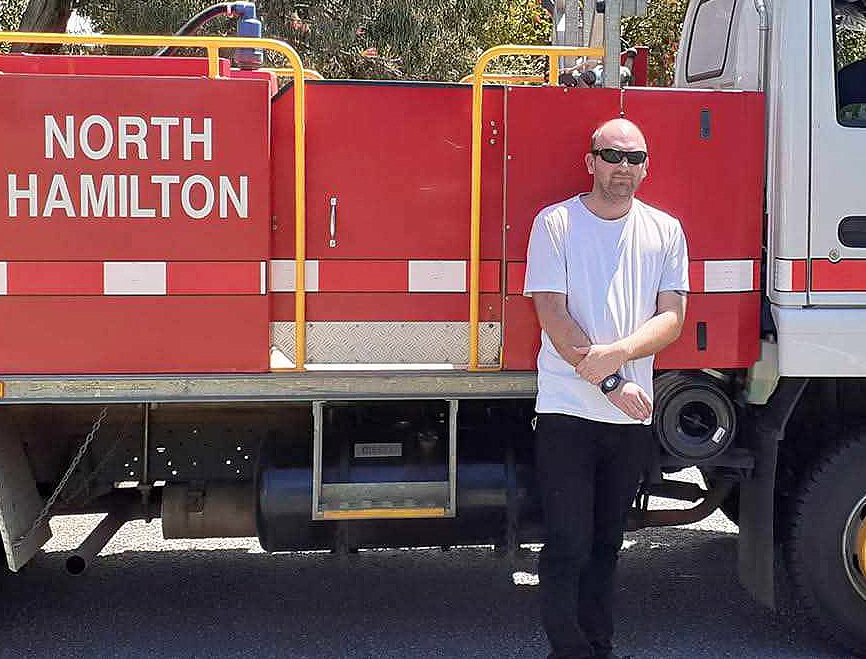The crucial role of Hamilton Airbase

Water bombing aircraft play an important role in suppressing fires, but to do an efficient job they need the dedicated work of volunteers at airbases.
A group of volunteer firefighters were recently honoured with National Emergency Medals for their efforts at the Hamilton Airbase during the 2019-20 Australian bushfire crisis.
Operating water bombing aircraft out of Hamilton Airbase has long been a key component of CFA’s incident response, supporting firefighting efforts at ground level with direct suppression of fire activity via aerial attack.
Aircraft operating out of the base rely on a volunteer bomber loader crew to help prepare and load water and retardant and enable repeated water bombing runs to be conducted on request.
When CFA Deputy Chief Officer South West Adrian Gutsche presented the National Emergency Medals, he said they were an important recognition of the valiant efforts of CFA members.
“The work that the bomber loader crews undertake is hot, strenuous and requires a high degree of care and precision so that ongoing aerial attack operations can be conducted successfully,” Adrian said.
The Hamilton Airbase was activated for 26 days during the 2019-20 National Emergency declaration for Glenelg and Southern Grampians, including a period of 15 consecutive days from 20 December 2019 to 3 January 2020 when fire activity was at its highest.
“These volunteers come from brigades in Hamilton and surrounding areas and are members who have already dedicated many years of service to CFA,” Adrian said.
Hamilton Airbase Manager and medal recipient Ron Huf said it was an honour to be formally recognised.
“I’m proud to be able to provide support to the community through what I do at the airbase. It was my first year in that role. I had just done my training, which was fairly intense, but it was great preparation for what was to come,” Ron said.
“I’ve been in CFA for 45 years and spent years as a captain and strike team leader. I got to the point where I wanted a change from being out on the fire trucks and command vehicles.
“Having an interest in aircraft and aviation, I was drawn to helping in the airbase setting. Having managed resources, staff and other complexities in my past leadership roles I thought it would be a good opportunity to contribute in a different way.”
Ron said the back-to-back days are long and hot, but the crew enjoys the camaraderie of the team environment.
“It’s hard to quantify the work our members do at the airbase. We all do different things within the group, but those out there loading planes definitely deserve to be recognised,” Ron said.
“While working at the airbase in a voluntary capacity, CFA provided us with welfare support such as meals, accommodation and everything in between. They really looked after us.”

Simon Wilson, Senior Airbase Manager
As a retired farmer and CFA member since he was 15 years old, Simon Wilson remains devoted to giving back to his community, no matter the role.
Now aged 71, Simon has swapped the strike teams and ground crews for the camaraderie of the Hamilton Airbase and District 5 Headquarters brigade.
Simon spent 30 years as a CFA air observer before completing his accreditation as an air base manager and receiving several years of mentoring from his late friend Leighton Wraith.
In 2021, Simon inherited Leighton’s job following his tragic, sudden passing.
“Leighton was the driving force behind establishing the airbase, and when he was looking for a radio operator and someone with aviation experience to assist him, he came to me,” Simon said.
A day in Simon’s seat can be varied but when the Fire Danger Index conditions are above 50, he knows anything can happen.
“There are days where for whatever reason no fires happen, thankfully, but then suddenly, the pagers go off, the pilots get organised and get airborne quickly,” Simon said.
“We’ve got four teams of bomber loaders on a weekly standby roster at home. As soon as the pilots leave, we call the team in.
“The planes are fully loaded ready to go, so they take off and do the initial run of the fire and by the time they’re back for their first reload we have our loaders ready to go.”
As a manager, Simon is then immediately tied to the radio to conduct flight following for the pilots - an aviation safety requirement and record keeping process for a fire.
“There are set procedures we go through if we cannot communicate with pilots. Something I hope I never have to do,” Simon said.
“Pilots must communicate with someone on the radio every 30 minutes, updating where they are and what they’re doing. If we don’t hear from them for a further 20 minutes, we call search and rescue.”
The 2024-25 fire season was the busiest on record for the airbase, mainly because of its support for the Grampians National Park bushfire.
“During the Grampians fires we were taking on a number of roles daily, whether that was maintaining the welfare of those at the airbase, liaising with logistics people for food and meals or keeping an eye on the level of supplies like retardant and fuel,” Simon said.
Simon said his team is always on the lookout for locals who would like to give them a hand at the airbase.

Allan Hadden, Bomber Loader
Allan Hadden, a North Hamilton Fire Brigade firefighter of 13 years, jumped on board at the airbase four years ago when he found out the aircraft got serviced in his hometown.
“I’ve always had a fascination with aviation and seeing the water bombers. When I realised it was just around the corner, I thought it was a good way to get up close and personal and learn more about them,” Allan said.
“Due to some health issues, I had to get into something a bit slower, so it was a good opportunity. But as soon as I got the all-clear, I went back to jumping on the fire truck too.
“The fellas out there are unreal. They’ve been in it for a lot longer than me – I’m always learning from them.
“It’s amazing to see how far they’ve come, from a small garden shed to the big shed we operate out of now.”
Having been baptised by fire on his first callout to a bushfire in the Grampians many years ago, Allan has now felt the rush of being a water bomber loader.
“We started as soon as the first fire kicked in at the Grampians, and we could see the small column of smoke that ended up being the start of the second fire. We could see the glow at night,” Allan said.
As the youngest member of the airbase, 39-year-old Allan said his first year was a big eye opener, quickly learning what goes on behind the scenes.
“In my head I sort of knew what it entailed, but seeing the effort the men go to from when they first walk in to then watching the planes as they fly off is amazing,” Allan said.
“There are many checks happening in the shed beforehand to prepare for when the planes come back.
“I’m often the first one to arrive, so I get the pumps and hoses ready, have a chat with the pilots and get the bags of retardant ready to mix for when we need it.”
Allan’s son James has come up through the Juniors, and being 14, is itching to get involved at the airbase alongside his dad when he turns 16.
“We’ll hopefully have a new member at the airbase soon. My son is glued to the planes already. He’s been out a few times and so has my daughter who was amazed by them too.”
| Submitted by |
News and Media |